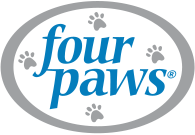How to Train a Dog to Pee Outside
Training your dog to pee outside: the end goal sounds so simple, yet the task seems so daunting. We get it!
Whether you’re welcoming a puppy into their very first home or acclimating an adopted dog in a new environment, we’ve compiled our top five pointers on how to train a dog to pee outside—no matter their age.
Tip #1: Spend Time with Your Dog
Although starting life with a new furry friend is a joyous occasion, your dog will likely feel many emotions. Because they’re in a new environment, they’ll experience anything from excitement and curiosity to confusion and anxiety. The best way your dog can familiarize themselves with their new world is to simply spend lots of time in it—and that includes being around you!
Aside from providing plenty of bonding time, this step lays the foundation for training success. Mastering how to train your dog to pee outside may not be quick, but effective training comes down to a routine, repetition, and consistency. Therefore, you simply need time if you want to tackle all aspects right from the start.

Tip #2: Embrace the Crate
What happens when you combine an untrained dog and free rein of the house? Surprises…and not the good kind. Confinement is an important aspect of training, and a crate is one of the most safe and effective ways to keep your dog out of unwanted areas.
Before you feel any guilt settle in, remember that dogs are den animals; it’s no coincidence you find them napping under the table! Your dog’s crate serves as their very own haven, and not a place they go when they’ve misbehaved. Angrily sending your dog to their crate will only make them associate it with negativity. Not to mention, you will soon learn that the crate is a valuable tool in how to train your dog to pee outside, so you definitely want to make it a spot they enjoy!
Check out our comprehensive guide on crate training for tips on selecting the right crate for your dog.
Tip #3: Settle into a Schedule
Early on, you may not know the signs that your dog needs to go to the bathroom. Therefore, your best guess is to go outside at times you can assume your furry friend needs to go. For starters, your dog will likely need to relieve themselves right when they wake up. Right after meals, playtime, and even random bouts of “the zoomies” are all occasions when your dog may need to pee, too.
Speaking of mealtime, young puppies generally need to eat more often than older dogs, which is why Step 1—spending as much time with your dog as possible—is so important. If you can’t stop home during the day, consider asking a friend, neighbor, or family member to stop in for a mid-day feeding and potty break.
As you navigate how to train a dog to pee outside, check out the below examples of what a typical schedule could look like when training either a puppy or an older dog.i
Potty Schedule for 5-Month-Old Puppy Not Yet Trained (Pet Parent Works Outside of Home)
7:30 a.m. Potty break
7:40 a.m. Feed puppy breakfast
7:50 a.m. Potty break. Put puppy in crate.
8:30 a.m. Pet parent leaves for work
12:30 p.m. Helper gives puppy potty break
12:40 p.m. Helper gives puppy midday meal
12:45 p.m. Helper gives puppy potty break. Put puppy in crate.
5:30 p.m. Pet parent arrives home. Potty break.
6:30 p.m. Potty break
7:30 pm. Dinner time
7:40 p.m. Potty break
9:00 p.m. Potty break. Pick up water bowl so puppy can better hold bladder all night.
10:00 p.m. Final potty break. Put puppy in crate for the night.
Potty Schedule for 2-Year-Old Dog Not Yet Trained (Pet Parent Works Outside of Home)
7:30 a.m. Potty break
7:40 a.m. Feed dog breakfast
7:50 a.m. Put dog in crate
8:30 a.m. Pet parent leaves for work
5:30 p.m. Pet parent arrives home. Potty break.
7:00 p.m. Potty break
7:30 pm. Dinner time
7:40 p.m. Potty break
10:00 p.m. Final potty break. Put dog in crate for the night.
Tip #4: Unleash the Power of the Leash
Taking your dog outside on a leash (even if you’re in your own yard) will allow you to control how much range your dog has. Too much roaming can lead to lots of distractions such as leaves, flowers, squirrels, birds—you name it.
You should also keep in mind that you’re outside for a specific reason, and it’s not to play (sadly). Leave the toys inside and keep the mood calm.
If possible, head to the same spot every time you go outside. This consistency will help your dog associate that area with potty time. Once they start to go potty, say a command such as “go potty!” so they associate the words with the action.
Lastly, give your furry friend enough time to go…but not too much time. If you’re outside for a half hour, they have lost sight of the task at hand. Go back inside and immediately place them in their crate. If they develop the urge to go potty, there’s a good chance they won’t go in their crate. After all, your dog doesn’t want to soil their comfy haven! Keep an eye out for any behaviors indicating your dog needs to go.
Signs Your Dog Needs to Go Potty:
- Whining
- Barking
- Scratching the door
- Pacing
- Circling
- Squatting
Be ready to quickly take your dog back outside to finally do their business!
Tip #5: Manage Potty Accidents Properly

How you manage accidents will have a lasting effect on the rest of your training efforts! And contrary to the old saying, no—you should not rub your dog’s nose in their own business. The only lesson this will teach is that you are scary. Not to mention, some dogs develop issues with coprophagia, or eating their own stool. Therefore, forcing them toward any messes may only lead to additional unwanted behaviors.
If you catch your dog after an accident, you should communicate that you’re displeased, but don’t yell; they’ll think you’re upset for going to the bathroom at all! Instead, save your energy for cleaning up the mess. If your dog smells traces of an accident, they’ll be more inclined to mark the same spot in the future.
If you catch your dog mid-accident, try to startle them rather than scare them. Clap your hands, say “hey!” loudly, and immediately take them outside to finish up in the appropriate area. Be sure to give them lots of praise and a treat once they go potty outside!
But What About Transitioning a Dog from Pads to Outdoors?
It’s possible your dog is already trained to pee on pads, especially if they’ve lived in another household (you can find out this background information from who or where you found your new best friend!). If it turns out they are trained to use a pad, then you will want to pick up quality potty pads to start the transitioning process.
Place the pad in a corner, preferably away from foot traffic (and even better if it’s close to the door). With every new pad you place down, move it closer and closer to the door—just a foot or two at a time will do. Eventually, put the pad outside in the desired location and begin taking your dog there at regular intervals.
To aid in the transitioning process, Wee-Wee® Ultimate Attractant Pads with Grass Scent feature an inviting grass scent, which helps teach your dog to associate the smell of grass with potty time. Not to mention, that familiar scent comes in handy on occasions your dog needs an indoor potty solution, such as traveling, inclement weather, or simply when you can’t squeeze in an outdoor bathroom break.
RELATED: What’s the Best Way to Clean Up Dog Poop in the Yard?
Be Consistent, Stay Positive, and Practice Patience!
Now that you know how to train a dog to pee outside, the rest comes down to consistency and patience! Keep in mind that your dog’s breed, size, temperament, and past experiences can all come into play when it comes to potty training. Before you know it, properly answering nature’s call will simply become second nature for your dog!










